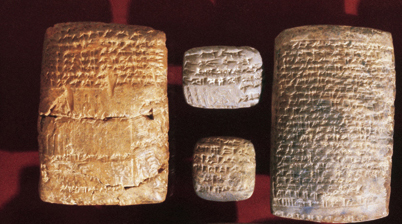Image Details

Semitic Museum, Harvard University
Four cuneiform tablets from Nuzi, an ancient city in northern Syria, represent a vast archive of over 3,500 tablets that have helped scholars attribute an ethnicity to some names in the Book of Joshua. The archive, which dates to the 15th century B.C.E., contains many personal names from the Hurrian culture, including three—Piram, Sheshai and Talmai—mentioned in Joshua 15:14. In the Joshua account, Piram was the king of Jarmuth, and Sheshai and Talmai, the sons of Anak from Hebron; all three are such minor non-Israelite characters that scholars believe their names accurately reflect the time period when the story began. Why, they reason, would later biblical editors have preserved centuries-old appellations from a foreign culture? Since the Hurrian culture and language flourished in the mid-second millennium B.C.E., author Richard Hess has used the three Hurrian-type names in Joshua to suggest a Late Bronze Age date (1550–1200 B.C.E.) for the story.
